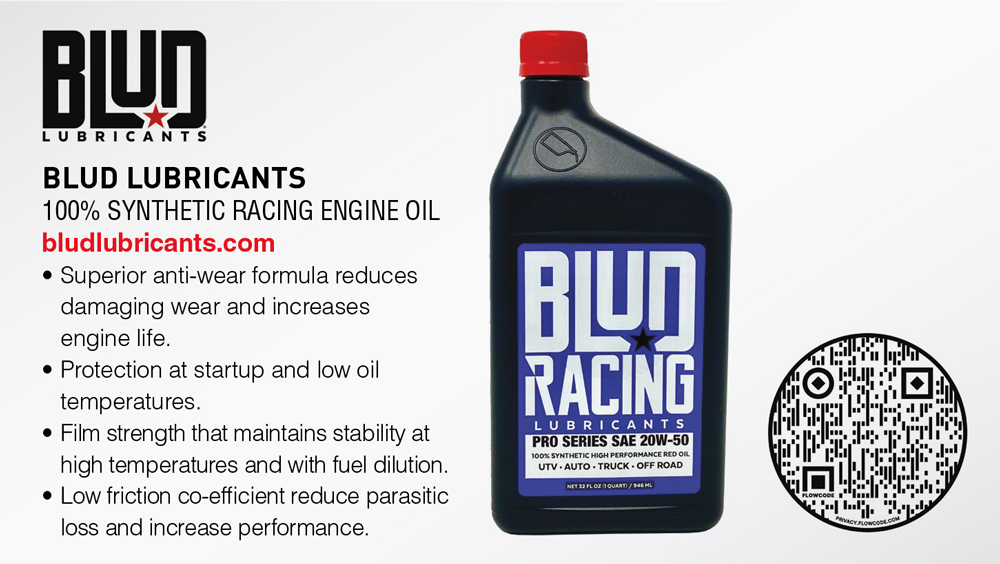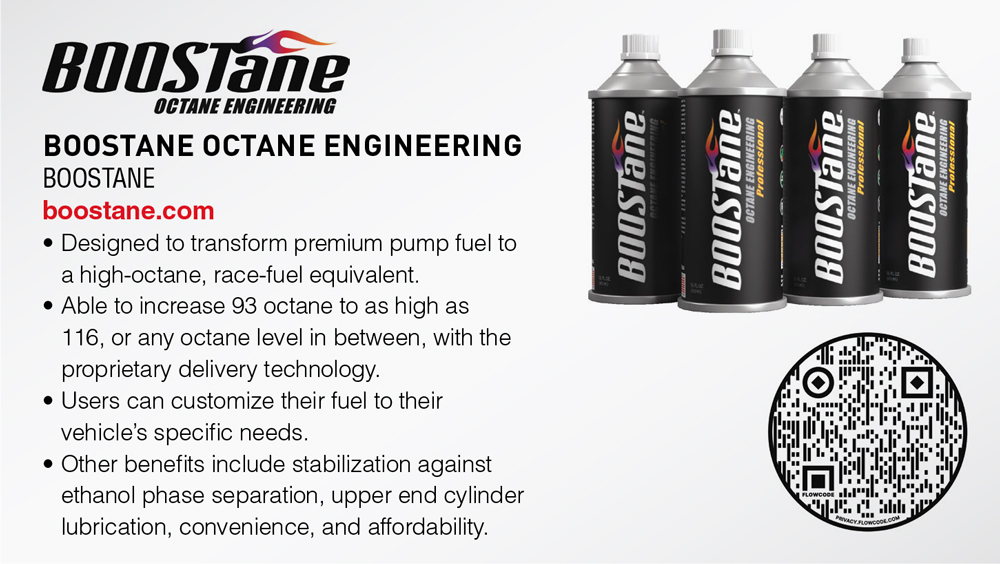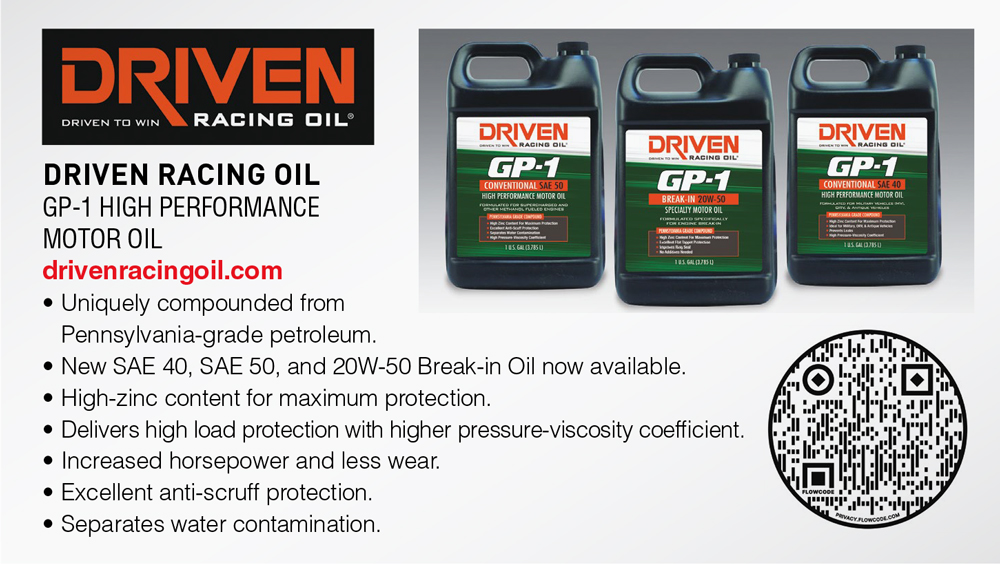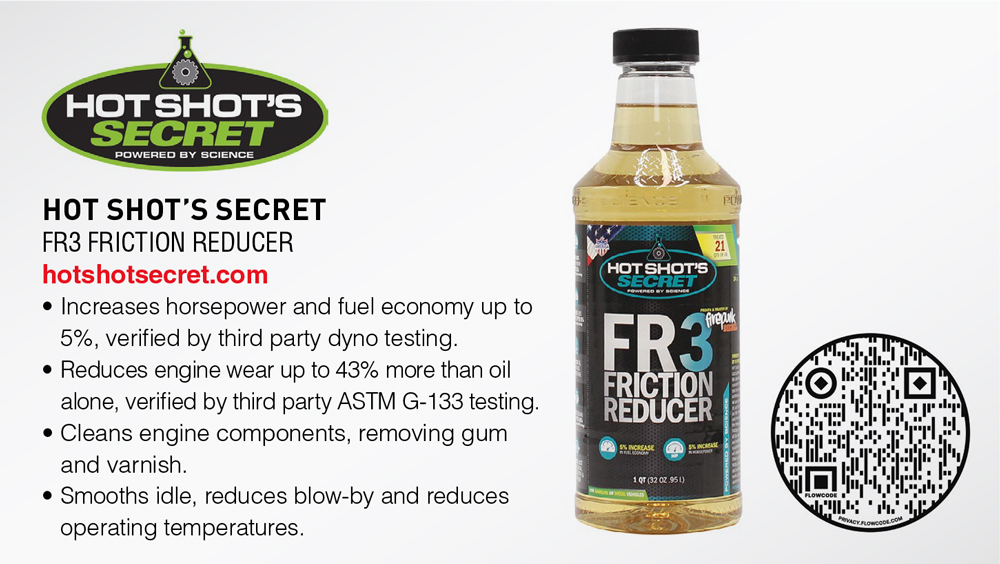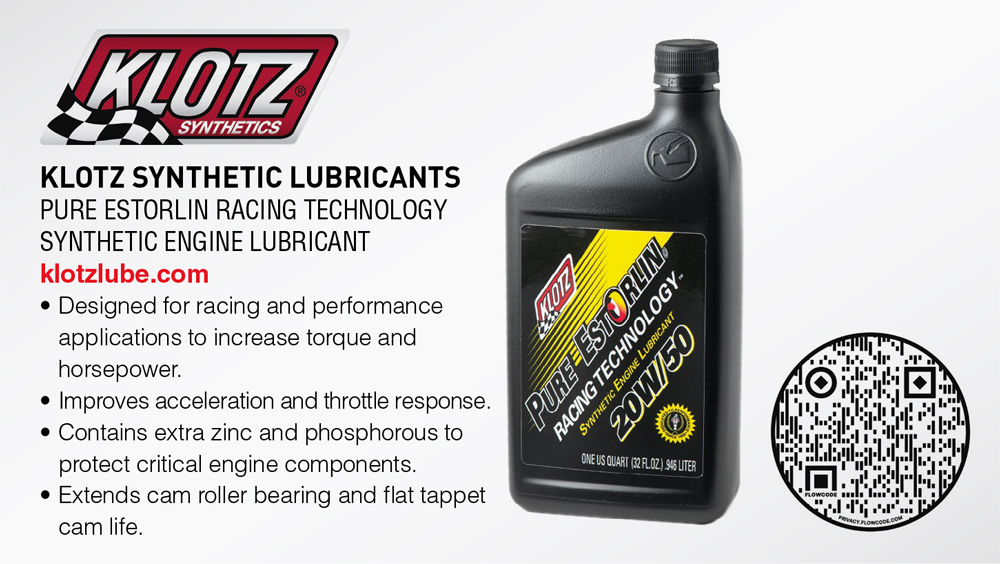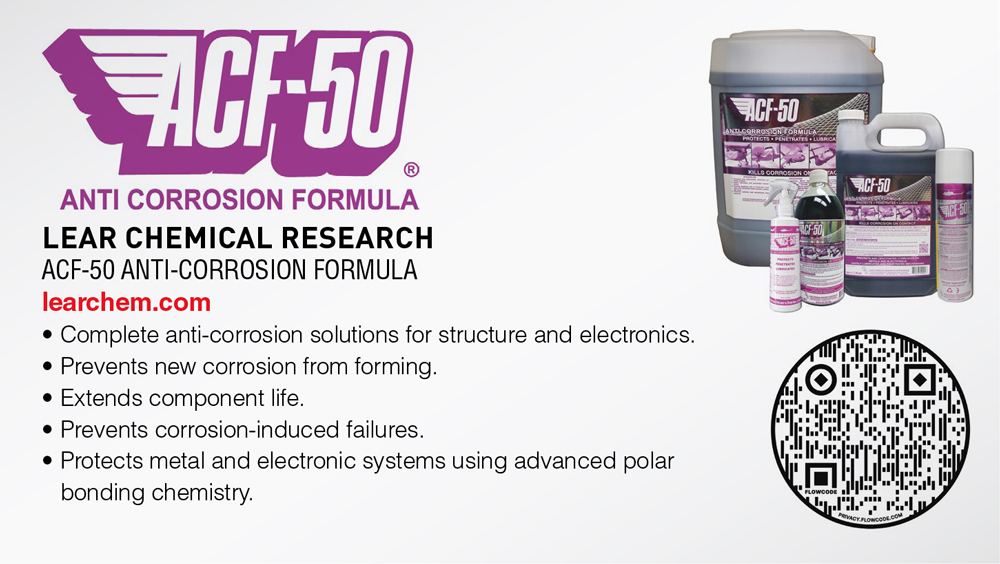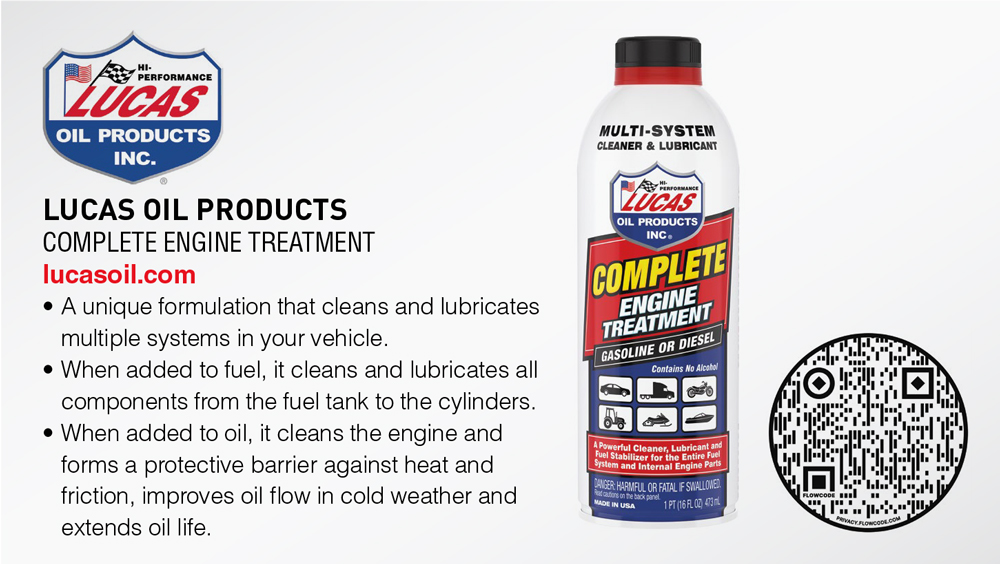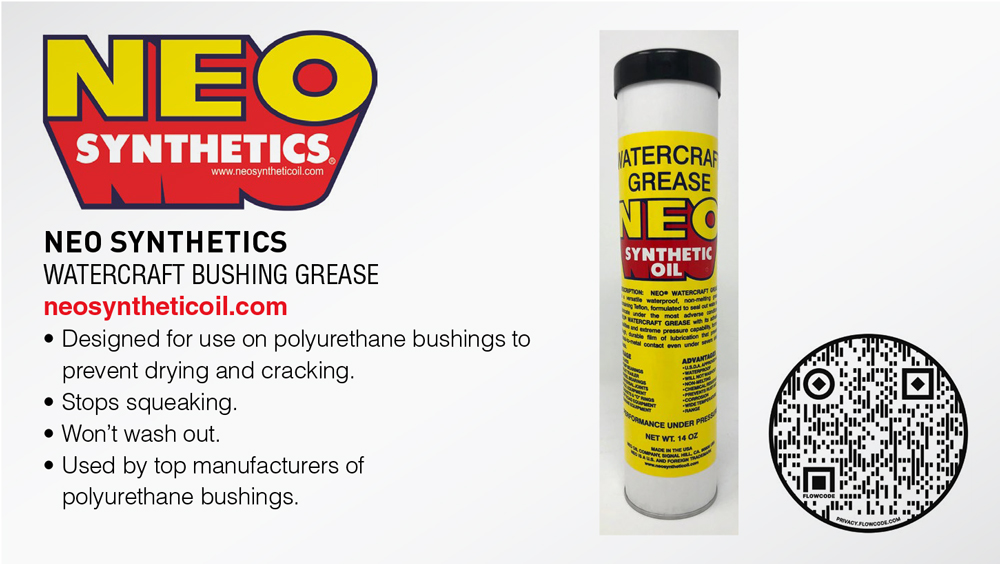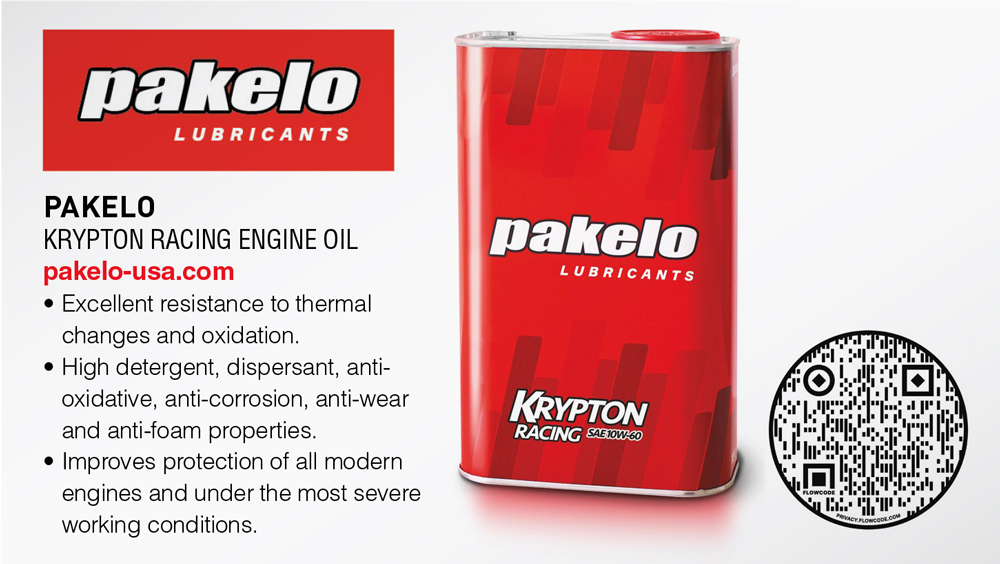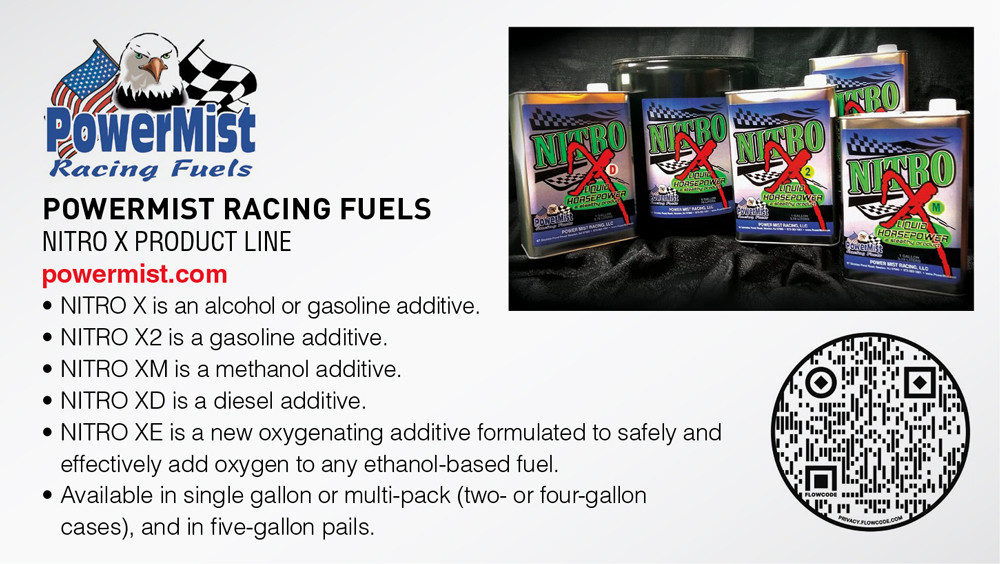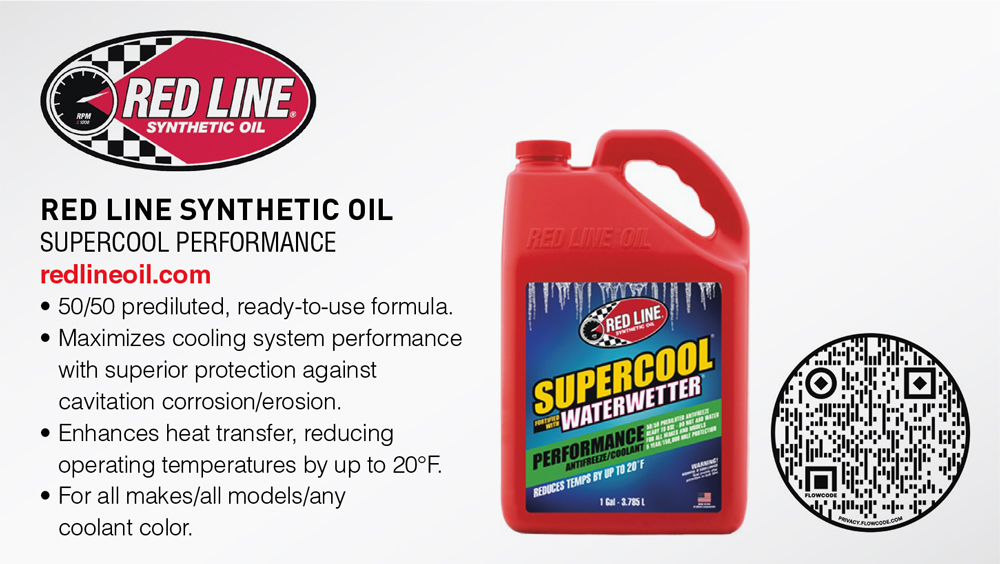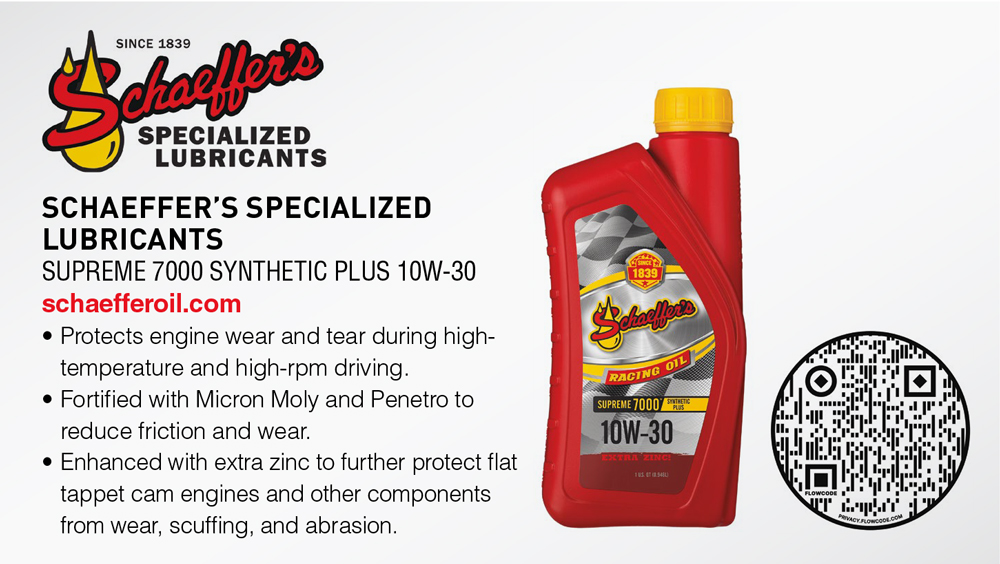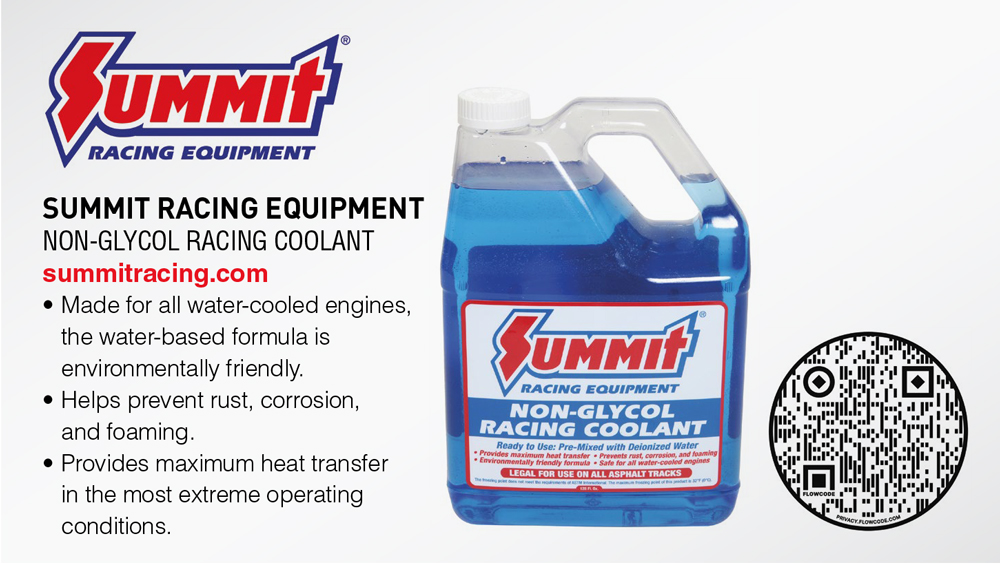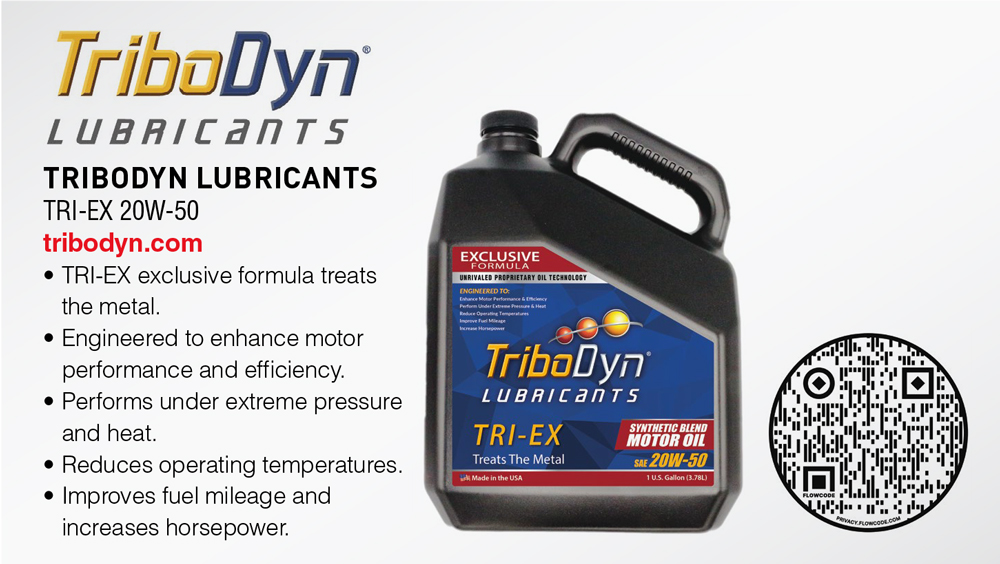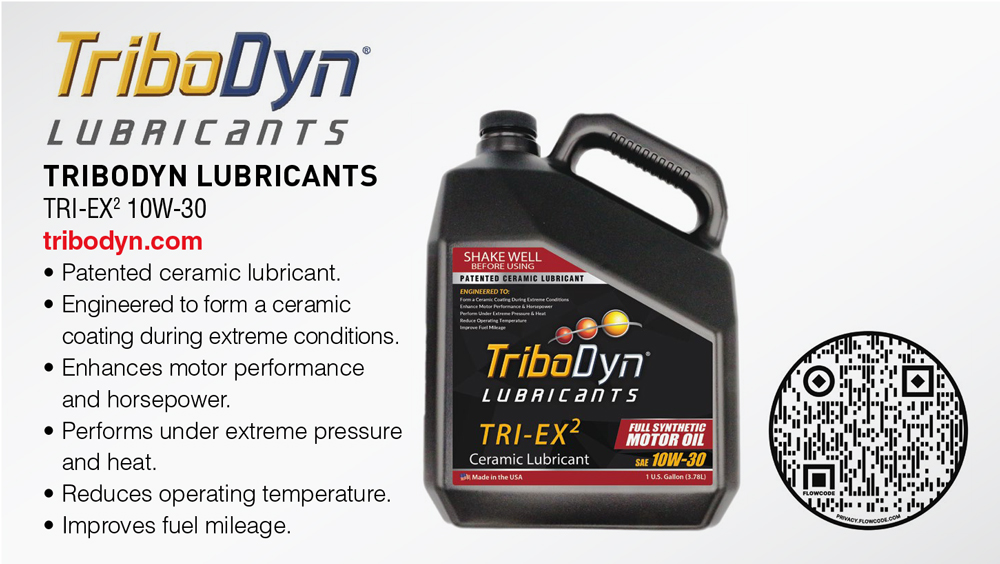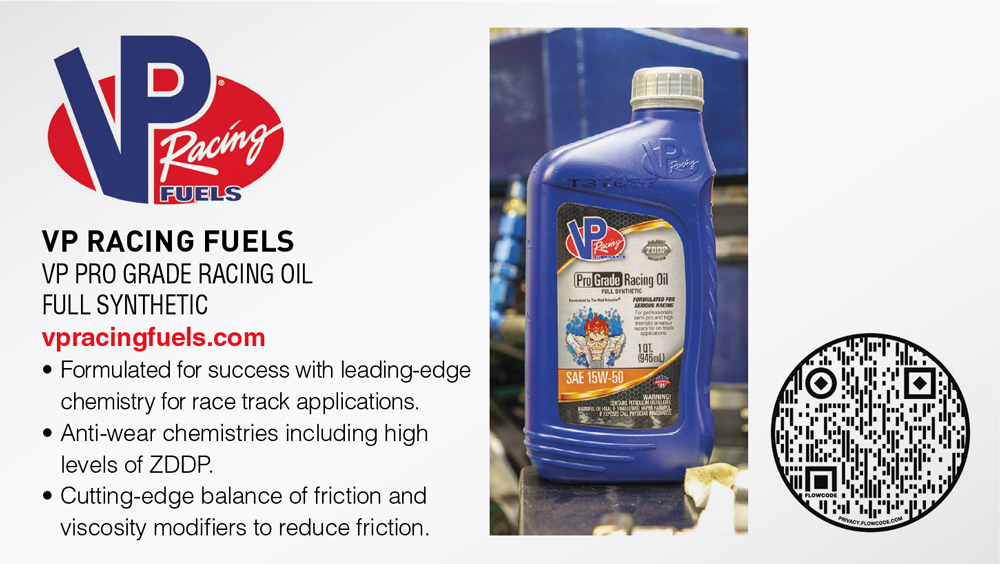FLUID DYNAMICS
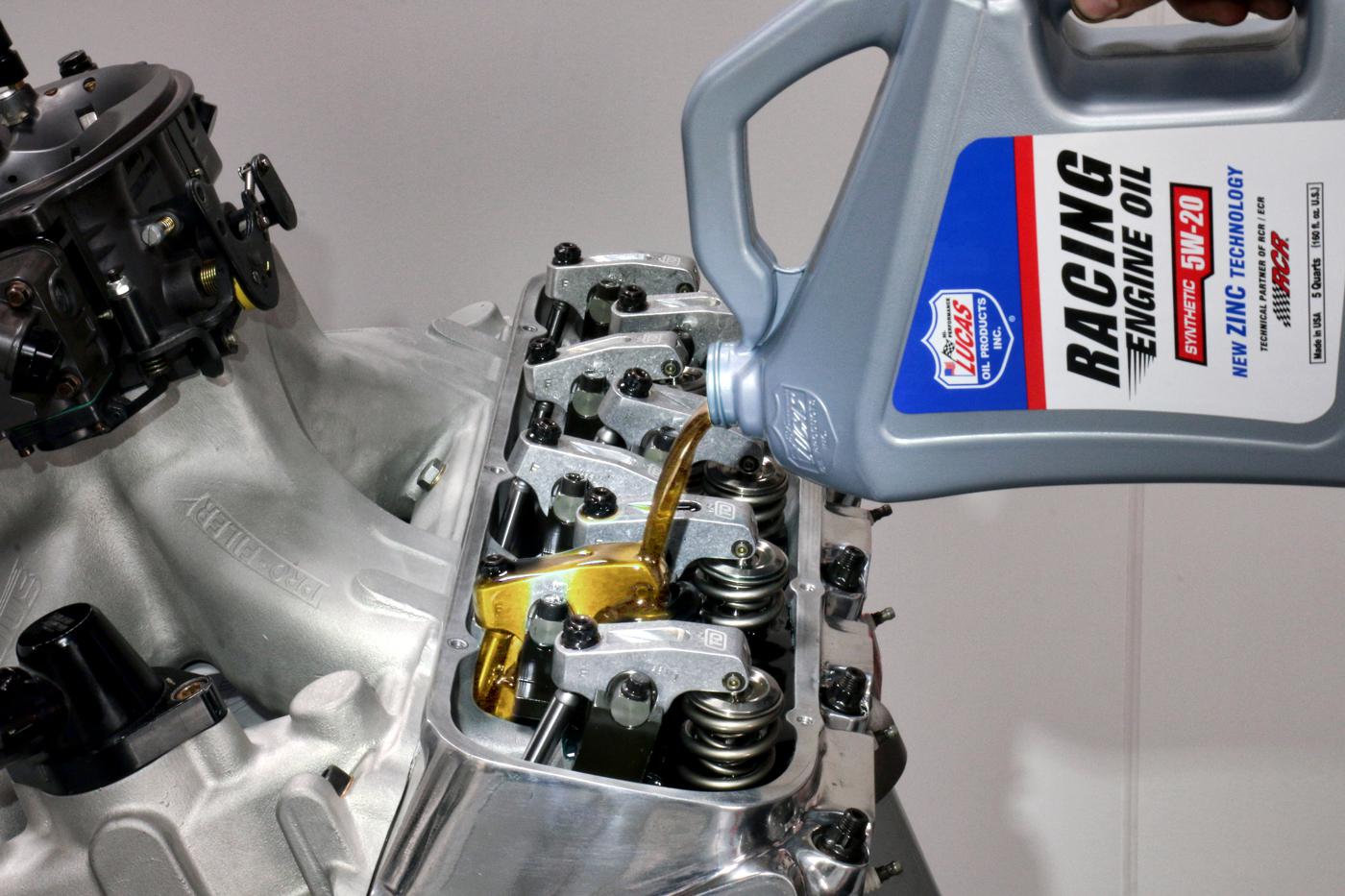
Photo courtesy of Lucas Oil Products
How lubrication companies are adapting to changes in the performance industry, and the products they’re bringing to market.
Some oil and lubricant companies are finding themselves at a crossroads, their product development teams being pulled by opposing market forces. On one hand, the lubrication needs of passenger cars are being driven by ever-present pressures to increase fuel economy. One result of this trend is the formulation of thinner and thinner oils, with viscosity “down to dangerous levels if you aren’t using an oil with high film strength,” said Len Groom of AMSOIL, Superior, Wisconsin. It’s not uncommon to see manufacturers recommend multigrade oils with the winter weight in the single digits—or less. “When you’re talking about 0W-16 or 0W-20s, you need to really pay attention to what you’re doing so you don’t get bearing wear.”
“We actually have a 0W-0 in R&D right now,” added Kyle Fischer of Hot Shot’s Secret, Mt. Gilead, Ohio. “It looks like the consistency of water.”
On another front, the American Petroleum Institute (API) recently drafted a new SP oil specification to help prevent low-speed pre-ignition (LSPI), which is “the tendency for a turbocharged engine to detonate at low rpm but high boost pressure,” Groom explained. “In order to get the mileage they’re looking for, [automakers] have to tune the timing and fuel map at a place where it gets close to detonating the piston. A properly formulated racing oil is going to have a tough time passing that spec due to the way oils are put together.”
And there’s the crossroads: “To make some of the mileage requirements, you have to do things to the product that won’t be great for a race engine,” Groom said. “There was a time when an oil could do both jobs, but now the passenger car world and the racing world have gotten so specialized, it’s almost impossible to do both jobs with one product.”
Some lubrication companies have found a way to do both, while others choose to concentrate purely on the racing side of the industry. What follows is a look at some of the latest oil and lubrication products formulated to meet racing’s high-powered, high-pressure demands.
“Our Oil in Everything”
TriboDyn in Mooresville, North Carolina, is launching “a whole new generation of engine oils,” said Mark Wheatley. Where the company previously had just one high-performance fully synthetic lubricant, it will now have two, TRI-EX and TRI-EX2.
TRI-EX2 is “an improved formula of our original product,” Wheatley explained. The patented ceramic lubricant forms “a ceramic coating on the substrate during extreme conditions. It’s designed to adhere right before micro-welding or galling and stop those things.” Many racing oils tout their ability to withstand extreme pressure, but Wheatley has independent testing to back up the claim, showing the oil maintains its film strength at pressures above 300,000 psi. The new TRI-EX2 formulation still comes out of the bottle in its distinctive blue color, though there is less dye in the new formulation to help avoid stains.
TriboDyn’s all-new TRI-EX has a proprietary synthetic formula that “treats the metal,” Wheatley said. “It embeds itself in the metal to fill in the pores and make it smoother, slipperier.” Early testing of the oil indicates that the friction-reducing properties from its metal treatment only improve over time. An Australian superbike rider tried the new oil in his Honda CBR1000RR and compared it with another oil brand. Not only did the engine make more power on the dyno with the TriboDyn oil, but it also kept “getting better and better on the road,” the rider told Wheatley. A year and about 3,000 miles after first putting the TRI-EX in, the Honda made even more power on the dyno.
Both new TriboDyn oils meet or exceed API specs, Wheatley said. “I want our oil to go into everything. It will lower operating temperatures and protect the engine, but you can also put it in a race car. That’s what it’s really built for, but why not have better oil in your daily driver?”
Wheatley plans to introduce the new TRI-EX oil in the spring, at a price point of around $12.50 per quart. TRI-EX2 will phase in at about the same time, priced at between $16 and $17 per quart. Both oils will be manufactured in Mooresville and will be available in quarts and gallons, “but we can special-order pails and drums,” he said.
Efficiency
Lubrication companies have various ways of describing their products’ relationship to power—how an oil can “make” power or “free” power. The key factor here is efficiency: Engine output will increase as its efficiency increases.
Engine efficiency loss is primarily due to friction between its hardware components. Data collected by VP Racing Fuels in San Antonio, Texas, show that most of that loss comes from the main bearings, followed by the piston rings. By reducing this metal-to-metal friction with properly formulated oils, an engine will see increases in horsepower, torque, and fuel economy, as well as lower operating temperatures—all signs of improved engine efficiency.
VP’s approach to formulating a high-performance lubricant is three-fold, a company source said: Improve the ability of the oil to cling to metal components by improving viscosity using select base oils with polar characteristics; add anti-wear chemistries beyond ZDDP that create a protection layer on the metal surfaces; and add friction modifiers to reduce surface friction between the oil and moving metal components and reduce fluid-to-fluid friction.
VP has quantified its efforts by working with several engine builders who have seen “real horsepower gains” during dyno tests of VP’s oils, the rep noted. Many of these builders have also documented engine tear-downs to inspect for wear and have found engine internals that look “virtually new” and can be reused beyond their traditional replacement intervals.
In fact, VP has formulated several lubricants for the racing community. Among them is its Nitro Hi-Performance oil, a conventional 70-weight oil designed for the “extremely stressed” engines used in drag racing and tractor pulling. Its heavy viscosity and high levels of ZDDP provide “critical protection” for high-load, high-torque applications. It can be used with gasoline, diesel, alcohol, or nitromethane fuels. At a weight of 0W-50, VP’s full synthetic EX HP Hi-Performance Oil is blended to protect an engine at high and low temperatures, provide fast flow to critical engine components, and prevent high-temperature shear. High levels of ZDDP in the formulation protect flat-tappet and roller camshafts.
Tenacious Cling
The new GP-1 Assembly Gel from Driven Racing Oil in Memphis, Tennessee, is “really revolutionary,” said Kyle Fickler.
“It’s not really a complete fluid like a lube oil, but also not quite as thick as a grease,” added David Chamberlain. Comparisons to hair gel are apt, they said, since the company supplying the gel base “makes products for the health and beauty industry,” Chamberlain explained. “We add our zinc additive, our moly, and a few other things that are suspended by that gel compound to make a unique anti-wear formulation for initial dry start-ups.”
Engine builders who have used the gel appreciate the fact that “it stays where you apply it,” said Chamberlain. “It has a tenacious cling to it.” That’s important, he said, because so many engines aren’t started immediately after assembly. “I would estimate 80% of builds aren’t getting fired within the first month. For that reason, engine builders would have gone with our assembly grease in the past because it hangs on.”
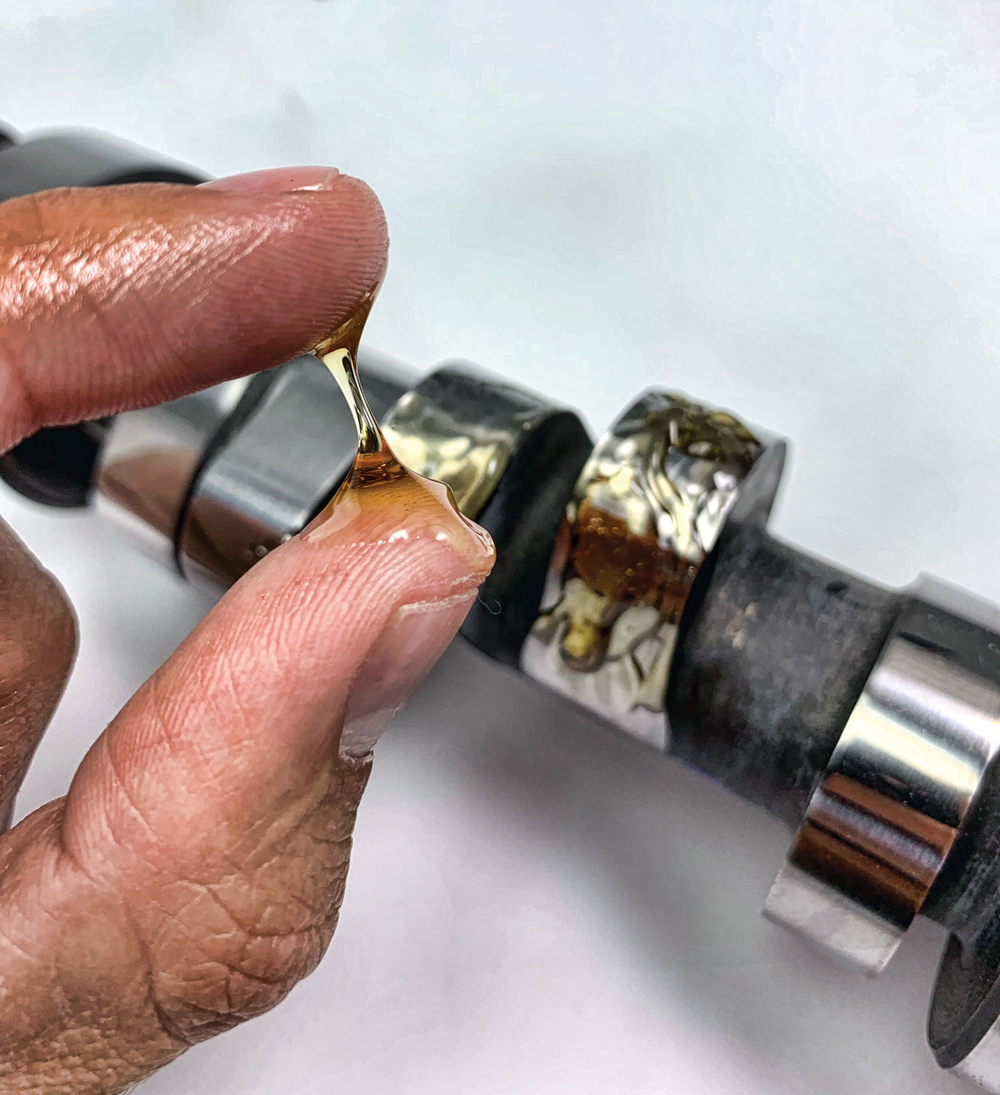
The gel hangs on, too, with an added benefit. “Some engine builders don’t like to use grease on the bearings because it gets a little sticky and won’t provide a great feel when rotating the motor over by hand,” Chamberlain said. “The gel isn’t as thick and won’t be as resistant, so you’ll get a better feel by hand.”
Driven sells the GP-1 Assembly Gel in one-ounce packets, enough to assemble a complete engine, Fickler said. “When you first grab it as an engine builder, you wonder how many packets you’ll need to do the engine. But as you start working with it and realize how good of a lube it is, you’ll use less of it than you would a grease because of the feel it gives you.”
Sweet Crude
While best known as a synthetic oil company, Driven took a different approach with its GP-1 line of racing oils.
“GP-1 is essentially what an advanced Kendall GT-1 would be today,” said Chamberlain. “What made that oil so good was the base oil,” a sweet crude from Pennsylvania “with unique anti-wear properties. It wasn’t just marketing fluff. There really was something about the base oil from there that made it special.”
To formulate GP-1, Driven blends the Pennsylvania crude with a synthetic base oil and “an additive package we developed in the [Joe] Gibbs days,” Chamberlain said. Additives include Driven’s proprietary ZDDP package and a moly Chamberlain described as an “anti-wear additive, but not in the same sense as zinc. It’s an extreme-pressure additive that complements the ZDDP, but it’s also a friction modifier. It frees up a little bit of power with a little lower coefficient of friction.”
GP-1 “also has the same tenacious cling as the assembly gel,” he added. “When you talk to someone familiar with using it or any legacy Pennsylvania base-oil product, the thing you hear is, ‘the cling.’ They’ll describe pulling a motor apart that’s been sitting for some time, and the valvetrain and other key components were still wet. They have a hard time cleaning if off their hands after they’ve been touching it.”
Chamberlain admitted that before formulating GP-1, “we were synthetic guys. And synthetics have their place. In really high-temperature situations, like endurance racing or road racing, that’s where you want our XP full synthetics. But for the majority of racers, especially at the grassroots level, who aren’t putting that extended use on their applications and are changing oil earlier, that’s where the GP-1 synthetic blend can have some benefit and be more cost effective.”
In addition to its GP-1 multi-grade engine oils, Driven plans to introduce “a couple of monograde oils, including a straight 40- and 50-weight for drag racers who want that instead of a 20W-50,” Chamberlain said. The company is also rolling out a new 20W-50 GP-1 break-in oil in the near future.
Building Blocks
The trend toward thinner oils applies to racing as well as street cars, “because the thinner it is, the more power it will make,” Groom said. “But at the same time, we have massive valve spring pressures, massive engine speeds, and huge boost pressures in some of these engines. So, your building blocks have to be strong, and you have to start by using a really good base oil. A lot of an oil’s film strength comes from its base oil, and especially with turbochargers, superchargers, and nitrous engines, film strength is key.”
AMSOIL “tends to lean toward a higher-end base oil construction because we design and manufacture several oils recommended for extended drain intervals, Groom continued. “We can use some of those base oils to build our racing oils. Since we’re using an inherently stronger backbone, you get much better protection. The engine looks so much better even after you beat it up.”
Will Not Shear
Fischer used an evocative visual analogy to describe the molecular structure of the synthetic poly-a-olefin (PAO) base oil used in Hot Shot’s Secret Adrenaline Racing Oil. “Imagine you want to slide across a room full of balls. With a conventional oil, those balls are all different sizes—baseballs, basketballs, golf balls. You don’t slide very well.” A conventional synthetic, he said, is like a room full of baseballs and golf balls. “It’s a little more consistent and easier to slide across.”
In the case of the PAO oil, because “we have synthesized the molecular structure of the oil itself, now the entire room is full of tiny BBs. They are 100-percent identical, wall-to-wall, so you can run and slide freely, and not get hung up on different sizes of molecules. Not only can it theoretically not shear, it will not shear.”
Yet the base oil “is only half of the equation,” Fischer said. “We don’t take our foot off the pedal with the additive package.” That package includes a sulfur-based zinc additive; calcium; antimony (“which supercharges the zinc and its protection properties”); and the company’s patented FR3 Friction Reducer, with carbon nano spheres “that find every single little tolerance in the engine and fill those voids until there’s a completely flat film layer. The flatter the film layer, the more efficient it can be as a lubricant.”
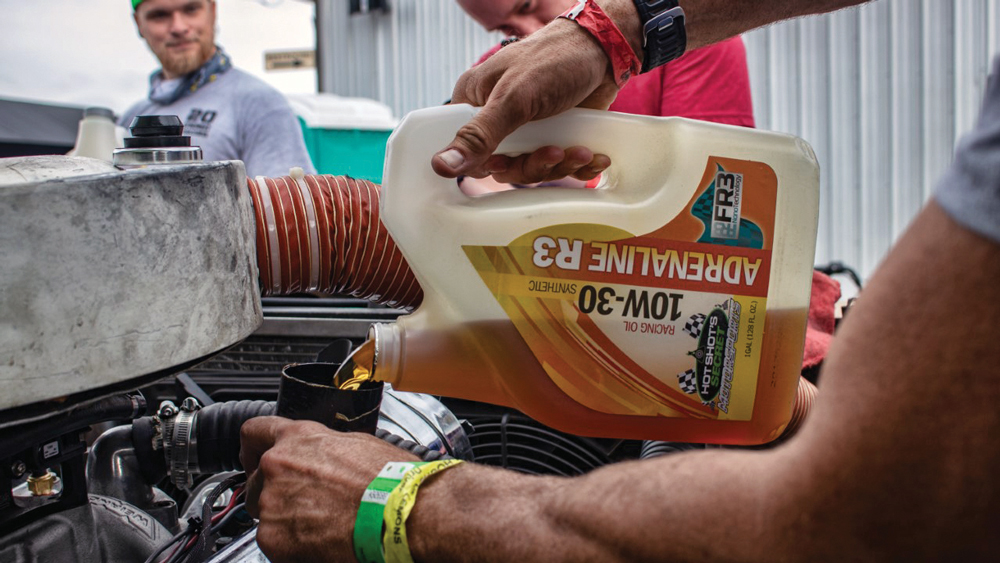
In the Hot Shot’s Secret product timeline, the FR3 Friction Reducer predated the Adrenaline Racing Oil and was sold as an oil additive. “We knew we had something really good,” Fischer said, “but we wanted some hard data to show people why and how our product worked.”
While looking for an R&D partner in the racing world, the company came across Firepunk Diesel of nearby Plain City, Ohio. What began as a request for dyno time at the diesel motorsports shop has since become a tight-knit racing partnership. Firepunk’s S-10 pickup, wearing Hot Shot’s Secret livery, has earned the title “world’s fastest diesel truck” with a record 3.998/182.67-mph eighth-mile pass during Lights Out 12 at South Georgia Motorsports Park in late February.
Ring Seal
Now that the problem of flat-tappet camshaft break-in “for the most part has been solved,” said Lake Speed Jr. of Total Seal, Phoenix, Arizona, what’s popping up now on his radar are problems with piston ring sealing. It has become an issue, he said, as engine builders move away from ductile-iron, moly-coated rings to steel rings with physical vapor deposition (PVD) coatings for use in high-power, high-cylinder-pressure applications.
“The moly coating on a ductile-iron ring is porous and can hold oil like a sponge,” Speed explained. “That oil is the gasket between the ring and the cylinder wall. With an old-school moly ring that could hold oil, cylinder-wall finish didn’t matter as much, and the break-in oil used didn’t matter as much because the ring held plenty of oil. Now, the steel rings with the PVD coatings don’t hold any oil. The cylinder wall has to hold all the oil. Cylinder-wall finish becomes really important, and since that cylinder finish is what’s holding the oil, the oil plays a critical role in the break-in process for the ring.”
Complicating the matter is the diversity of cylinder-bore materials used by racers. “For example, a gray cast-iron, regular engine block will like a mineral-based oil that’s higher in ZDDP, lower in detergent, and with no friction modifiers,” Speed said. “That package builds a very thick anti-wear film.”
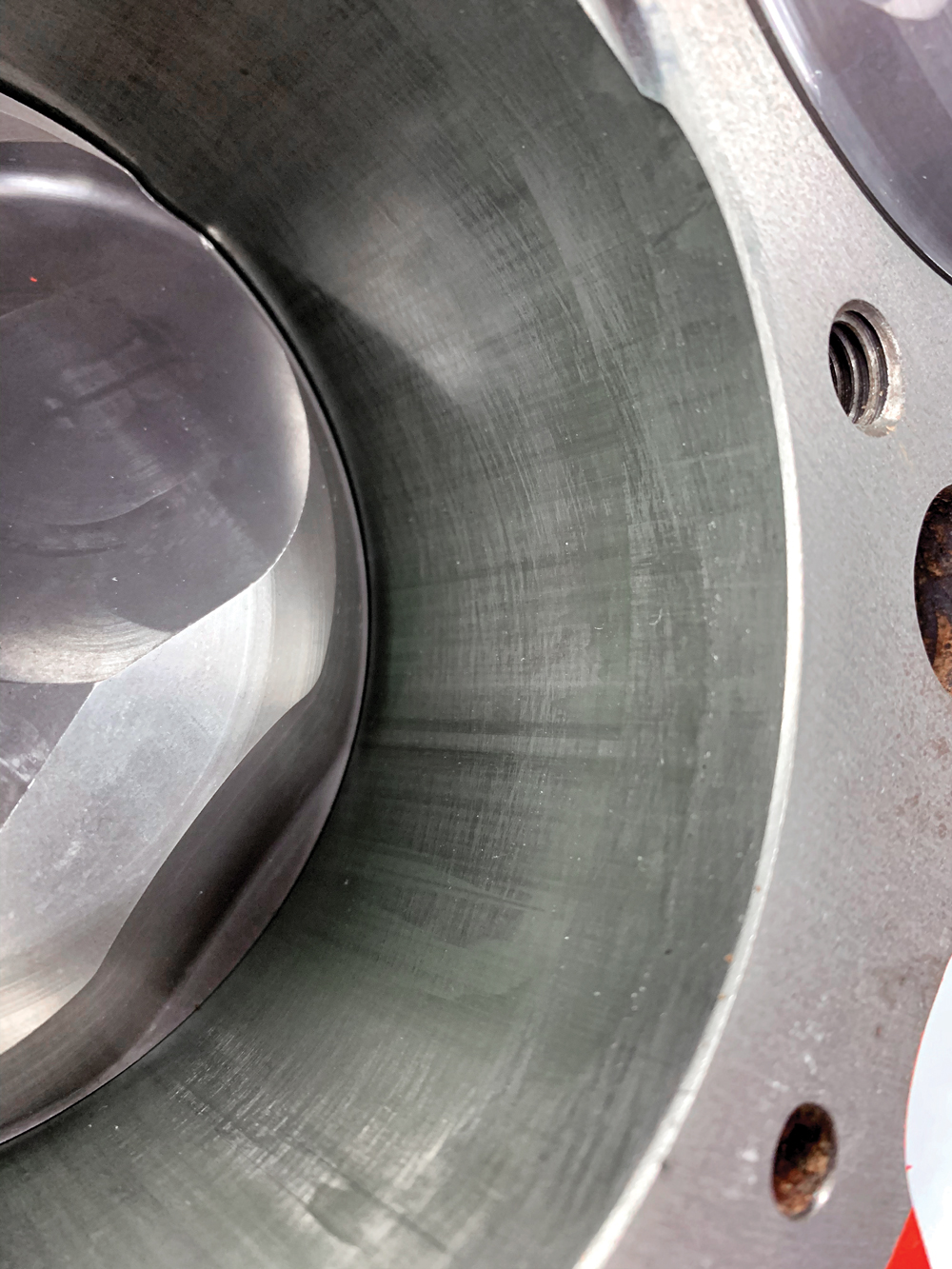
On the other end of the spectrum “is something like Nikasil, an incredibly hard nickel silicon carbide plating. Nikasil has a very smooth finish, so you don’t want the same kind of break-in oil as would be used with cast iron, as it will make the surface too smooth. If it’s too smooth it can’t hold any oil, and now the ring seal will be bad.”
The solution, Speed said, “when you get into higher strength, harder materials like SUMEbore or Nikasil, is to use a mineral-based break-in oil with no friction modifiers, a moderate level of ZDDP, and a higher level of detergent, because it’s important to not build too thick of an anti-wear film. That would not be good for the ring.”
Applying Total Seal’s Quick Seat dry assembly lube to the bore also helps the process, he has found. “It works great, especially in a Nikasil application where you need something to protect the ring and help the break-in process. It’s a dry film, with no oil in it, that provides initial anti-scuff protection to protect the ring at start-up.”
Quick Seat will turn the cylinder walls green, but that’s a good thing, Speed said. “If it doesn’t turn green it means the cylinder bore isn’t clean. Any kind of residual honing oil or products like that tend to be acidic, and a chemical reaction with the Quick Seat leaves the bore black. If the bore is clean the Quick Seat reacts with the metal and it turns green.”
Beyond the Engine Block
“We focus on the heavy stuff,” said Danny Vaca of LAT Racing Oils, Orange, California. “Our niche is turbochargers, ProChargers, and even nitromethane. Every year they’re making more and more power, so you have to keep on top.”
A year ago, the company came out with its R-series of synthetic racing oils, “the second generation of our 20- and 30-weight oils to be more aggressive with ring seal,” Vaca explained. “It has high lubricity, but you don’t want to make something too slippery, or some of the ring seal might not hold very well.”
LAT has also formulated a line of automatic transmission fluids specifically targeted at turbocharged drag cars, Vaca said. “When you’re talking turbochargers, you’re talking 3,000, 3,500, 4,000 horsepower. Obviously, the transmission builders have to build a more efficient converter so the transmission will hold up. Our formula is so aggressive, it holds the power in the transmission. Even when the transmissions get hot, our ATF doesn’t shear.”
LAT offers its ATF in three versions. “Pro Lite is for sportsman and nitrous, Pro ATF is for turbocharged cars, and Pro Max is for higher horsepower turbo, ProCharger, and blower cars,” Vaca explained. “It’s been a really good product for us, almost our number-one product.”
On the Horizon
Morgan Lucas of Lucas Oil Products in Corona, California, described the company’s new-product development as a “see-a-need, fill-a-need process. We’re looking at problems in the market, or ways to improve our products. We are also focusing on new markets, and new approaches to new markets.”
Lucas Oil recently brought Brandon Bernstein aboard “to head up our motorsports marketing efforts,” Lucas said. That addition has allowed Tom Bogner, Lucas Oil’s director of research development, “to spend more time in the lab working with chemists to look at the needs of racers.”
As an example, Lucas said Bogner has been working on “a fuel treatment to focus on ethanol- or alcohol-burning engines. It is really interesting technology, and we’re looking at how we can apply that best to the industry.” Lucas didn’t discuss specifics but did say the product “has been tested, and it works very well. We’re trying to understand the overall volume of business there. We may take some of the technology developed in the process and apply it to existing product to serve two different purposes for two different marketplaces.”
For some lubrication companies, the future is as much about new racing venues as it is new oil products. Groom, for example, talked about how sales of ATV and UTV oils “went crazy” during the COVID-19 pandemic. “Nobody was racing, but everybody was riding their dirt bikes and UTVs. Racing keeps going along, but ATVs and UTVs are making a huge surge. If you look at any of the racing series that are doing well, they are adding a UTV aspect to it. And those classes aren’t necessarily for a full-on race car, but something more affordable.”
Fischer said that Hot Shot’s Secret is expanding its involvement in motorsports beyond diesel racing to “the gas side. We have a big reach in the no-prep scene, and we have new cars running in the small-tire, X275, Radial vs. the World type of environment. It will take a couple years to get into the gas side of things and let this world know what we have, but I’m confident we can replicate the plan we did on the diesel side. It’s a lot bigger world, but we have the product and technology to really advance things.”
SOURCES
–
AMSOIL
amsoil.com
Blud Lubricants
bludlubricants.com
BOOSTane
boostane.com
Driven Racing Oil
drivenracingoil.com
Hot Shot’s Secret
hotshotsecret.com
Klotz Synthetic Lubricants
klotzlube.com
LAT Racing Oils
latracingoils.com
Lear Chemical Research Corp.
learchem.com
Lucas Oil Products
lucasoil.com
NEO Synthetics
neosyntheticoil.com
Pakelo Lubricants
pakelo-usa.com
PowerMist Racing Products
powermist.com
Red Line Synthetic Oil
redlineoil.com
Schaeffer’s Specialized Lubricants
schaefferoil.com
Summit Racing Equipment
summitracing.com
Total Seal
totalseal.com
TriboDyn
tribodyn.com
VP Racing Fuels
vpracingfuels.com
 MEMBERSHIP LOGIN
MEMBERSHIP LOGIN JOIN PRI
JOIN PRI
